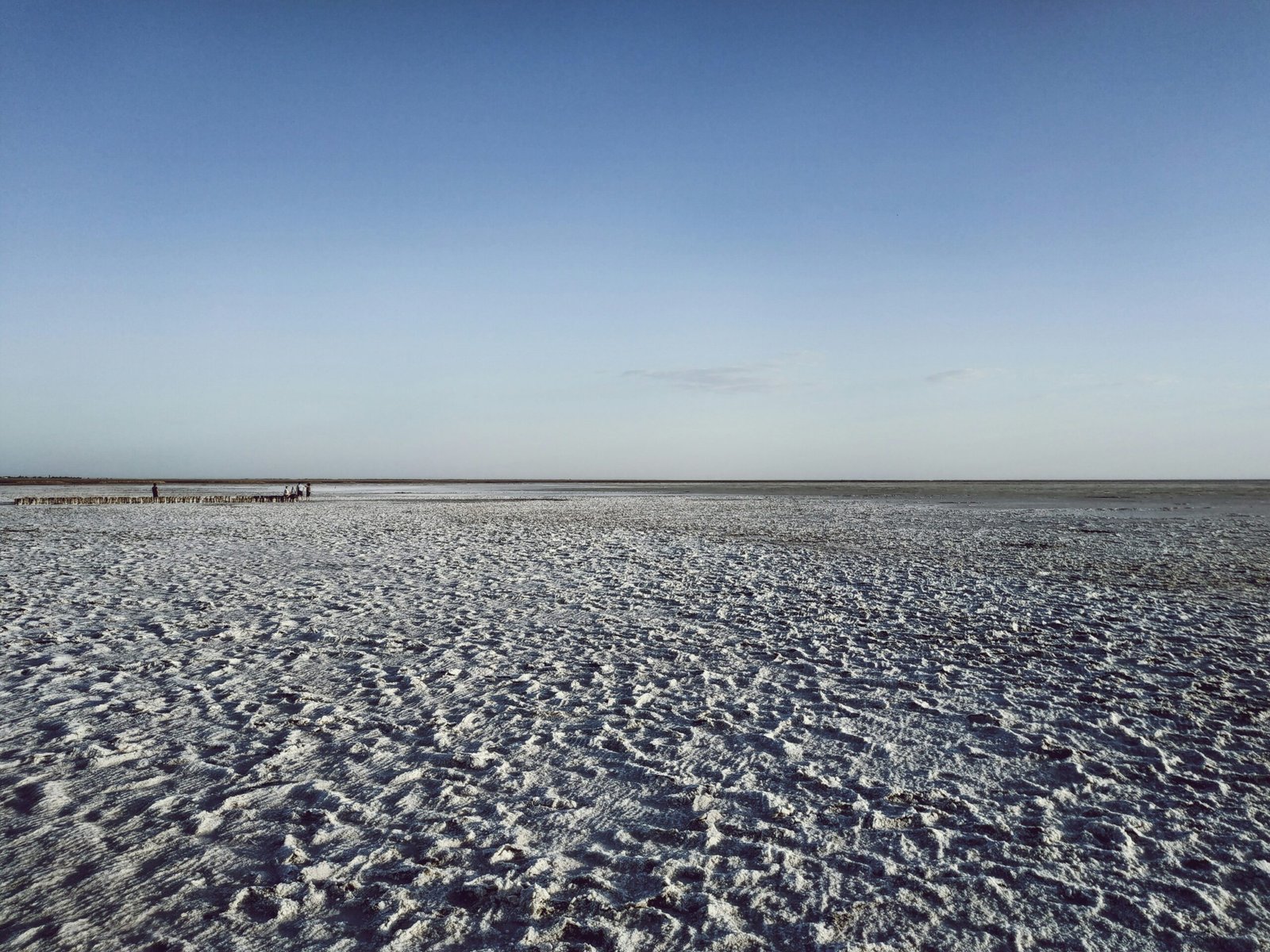“`html
Introduction to Salt Burn
Salt burn, a phenomenon that occurs across various domains, is both a challenge and an advantage depending on the context in which it is observed. Fundamentally, salt burn refers to the damage caused by excessive salt accumulation, impacting plants, food products, and even industrial materials. Understanding this process is essential for effectively mitigating its adverse effects and leveraging its beneficial applications.
In agriculture, salt burn can have detrimental effects on crops, leading to reduced yields and compromised plant health. When the concentration of salts in the soil becomes too high, it disrupts the osmotic balance, making it difficult for plants to absorb water. This dehydration effect results in the characteristic symptoms of salt burn: leaf scorching, wilting, and stunted growth. Farmers and agronomists must recognize and manage this issue to maintain soil health and ensure sustainable agricultural practices.
Beyond the agricultural realm, salt burn plays a significant role in food preservation. Historically, salt has been used to preserve various food items by drawing out moisture and creating an inhospitable environment for bacteria and other spoilage organisms. While this process is beneficial for extending the shelf life of foods, it must be carefully controlled to prevent undesirable changes in texture and flavor.
In industrial applications, salt burn can affect materials and equipment, particularly in industries where salt is used in large quantities, such as road maintenance during winter months. The corrosive nature of salt can lead to the degradation of infrastructure and machinery, necessitating rigorous maintenance and protective measures.
Understanding the multifaceted concept of salt burn is crucial for developing strategies to mitigate its negative impacts and optimize its beneficial uses. This exploration will delve into the mechanisms, consequences, and management practices associated with salt burn across different contexts, providing a comprehensive overview of this intricate relationship.
The Science Behind Salt Burn
Salt burn, a phenomenon often observed in various biological and material contexts, is primarily driven by the chemical interactions involving sodium chloride. The core mechanism behind salt burn is rooted in the principles of osmosis and ion exchange. Osmosis, the movement of water through a semipermeable membrane from an area of low solute concentration to one of high solute concentration, plays a crucial role in this process. When salt is present in high concentrations around cells, it creates a hypertonic environment, leading to the movement of water out of the cells to balance solute concentrations. This results in cellular dehydration, causing tissue damage and, eventually, cell death.
In plants, salt burn manifests when they are exposed to saline environments, either through soil salinity or the use of saline water for irrigation. The high salt concentration in the soil solution causes water to move out from the plant roots, leading to wilting, chlorosis, and necrosis. The ion exchange process also contributes to this damage. Sodium ions from the salt displace essential nutrients like potassium and calcium in the soil, disrupting nutrient uptake and further exacerbating plant stress.
In addition to its effects on biological systems, salt burn also impacts inorganic materials, particularly metals. For instance, road salt used for deicing can lead to the corrosion of vehicles and infrastructure. The sodium chloride from the salt dissolves in water and creates an electrolytic solution that accelerates the oxidation of metals. This process damages the structural integrity of bridges, roads, and vehicles, leading to significant maintenance and replacement costs.
Common scenarios of salt burn extend beyond agriculture and infrastructure. Coastal areas often experience accelerated building material degradation due to salt-laden air. Similarly, winter road maintenance practices in colder regions contribute to increased corrosion rates in vehicles and highways. Understanding the science behind salt burn not only provides insights into its detrimental effects but also highlights the need for effective management strategies to mitigate its impact.
Salt Burn in Agriculture
Salt burn in agriculture is a phenomenon that considerably affects crop health and yields. High soil salinity, often resulting from irrigation with saline water or the overuse of chemical fertilizers, can severely impact plant roots and overall growth. When salt concentrations in the soil become excessive, osmotic stress occurs, making it difficult for plants to absorb water. This leads to symptoms such as leaf burn, stunted growth, and, in severe cases, plant death.
Soil salinity disrupts the nutrient balance, causing essential nutrients to become less available to plants. This imbalance can be detrimental to crop health, reducing agricultural productivity. To counteract these challenges, farmers employ various strategies to prevent or mitigate salt burn. One common approach is the use of soil amendments, such as gypsum, which helps displace sodium ions and improve soil structure. This amendment facilitates better water infiltration and root penetration, reducing the adverse effects of salt buildup.
Proper irrigation techniques also play a crucial role in managing soil salinity. Techniques such as drip irrigation allow for precise water application, minimizing the accumulation of salts in the root zone. Additionally, leaching, the process of applying excess water to flush salts from the soil, is a widely practiced method to reduce salinity levels. However, this technique requires careful management to avoid water wastage and ensure that salts are effectively removed.
Another effective strategy is the cultivation of salt-tolerant crop varieties. These crops have adapted to high salinity conditions, allowing them to thrive where other plants might fail. For instance, barley and certain types of forage grasses are known for their tolerance to saline soils and are often chosen by farmers in affected regions.
Several regions around the world face significant challenges due to salt burn. In areas such as the Indus Basin in Pakistan and the San Joaquin Valley in California, soil salinity has become a critical issue. Farmers in these regions have adopted a combination of soil amendments, advanced irrigation methods, and salt-tolerant crops to sustain agricultural productivity. These case studies highlight the importance of integrated management practices in addressing the complex issue of salt burn in agriculture.
Salt Burn in Food Preservation
Salt has long been a cornerstone in the preservation of food, a practice that dates back thousands of years. The essence of salt burn, a crucial aspect of this process, lies in its ability to draw moisture out of food items. By reducing the water content, salt creates an environment that is inhospitable to bacteria and other microorganisms, thereby extending the shelf life of perishable goods.
Historically, methods such as curing and brining have utilized salt to preserve meats, fish, and vegetables. Curing involves rubbing salt directly onto the surface of the food, often in combination with other spices and preservatives. This technique not only enhances flavor but also ensures that the food remains safe to consume over long periods. Similarly, brining entails soaking food in a saltwater solution, which imbues the items with moisture while simultaneously extracting excess water, thus preventing microbial growth.
Modern food preservation techniques have evolved from these traditional methods, incorporating advanced technology and scientific understanding. For example, vacuum packing combined with salting is now a common practice, particularly in the preservation of meats and fish. This method involves sealing the food in airtight containers before subjecting them to a controlled salt application, ensuring minimal bacterial contamination and oxidation.
However, achieving the right balance in salt burn is critical. Over-salting can lead to food that is unpalatable and excessively salty, which can be a significant drawback. Contemporary practices often involve precise measurements and controlled environments to ensure that the optimal amount of salt is used, preserving the food while maintaining its flavor and texture.
In modern times, the use of salt in food preservation continues to be pivotal, though often complemented by refrigeration and other preservation technologies. Nonetheless, the fundamental principles of salt burn remain unchanged, underscoring its enduring importance in keeping food safe and extending its usability.
Industrial Applications of Salt Burn
Salt burn plays a significant role in various industrial applications, where its effects can be both beneficial and detrimental. One of the most common uses of salt is in the de-icing of roads. During winter, salt is spread on roadways to melt ice and snow, ensuring safer driving conditions. However, this process can lead to the corrosion of infrastructure and vehicles. The chloride ions in salt accelerate the rusting process of metals, compromising the integrity of bridges, roads, and vehicles. This necessitates regular maintenance and repair, leading to increased costs for municipalities and individuals.
In the realm of chemical manufacturing, salt is a fundamental component. It is used in processes such as electrolysis to produce chlorine and caustic soda, which are essential in the production of various chemicals. However, the presence of salt can induce corrosion in industrial equipment. The high chloride content can deteriorate metal components, leading to leaks, equipment failures, and potential safety hazards. To combat these issues, industries employ several measures to manage and mitigate the effects of salt burn.
One common strategy is the application of protective coatings. Industrial equipment and infrastructure are often coated with materials that resist corrosion, such as epoxy or polyurethane. These coatings provide a barrier between the metal and the corrosive environment, extending the life of the equipment. Additionally, industries may use alternative materials that are less susceptible to salt-induced corrosion. Stainless steel, for instance, contains chromium, which forms a passive layer that protects against rust.
Moreover, regular maintenance and inspection are crucial in managing salt burn. Industries routinely monitor the condition of their equipment and infrastructure, allowing for the early detection and remediation of corrosion issues. By implementing these strategies, industries can effectively mitigate the adverse effects of salt burn, ensuring the longevity and safety of their operations.
Environmental Impact of Salt Burn
The environmental repercussions of salt burn are profound and multifaceted, particularly in ecosystems where high salinity levels can wreak havoc. When salt is used extensively, whether for de-icing roads or as an agricultural additive, it often finds its way into nearby water bodies through runoff. This increase in salinity levels can have devastating effects on aquatic environments, disrupting the delicate balance that sustains biodiversity.
Elevated salinity can lead to poor water quality, adversely affecting the flora and fauna that thrive in these habitats. Many aquatic organisms, including fish and invertebrates, are highly sensitive to changes in saline concentrations. An increase in salinity can cause physiological stress, reduce reproductive success, and even lead to mass die-offs. Similarly, salt accumulation in soil can negatively impact terrestrial ecosystems by altering soil structure and nutrient availability, thus inhibiting plant growth and reducing agricultural productivity.
Biodiversity loss is a significant concern associated with salt burn. Species that are not tolerant to high salinity levels are often outcompeted by more salt-tolerant species, leading to a decline in species richness and an imbalance in the ecosystem. Additionally, the presence of excessive salt can foster the growth of invasive species that further degrade the natural environment.
In recent years, considerable research has been dedicated to understanding and mitigating the environmental impact of salt burn. Various initiatives aim to reduce the environmental footprint of salt use. For instance, alternative de-icing materials with lower environmental impact are being developed and tested. Agricultural practices are also evolving, with a focus on soil health and the use of salt-tolerant crop varieties to combat salinity issues.
Efforts to address the environmental consequences of salt burn are ongoing, with interdisciplinary approaches being adopted to develop sustainable solutions. Collaborative research, policy changes, and community engagement are crucial in mitigating the adverse effects of high salinity levels on our ecosystems.
Preventing and Managing Salt Burn
Preventing and managing salt burn is a multifaceted challenge that requires tailored strategies across different sectors such as agriculture, industry, and environmental management. In agriculture, one of the primary methods to mitigate salt burn involves comprehensive soil testing. Regular soil tests help in identifying salt levels and other essential parameters, enabling farmers to make informed decisions about crop selection and soil treatment. Crop rotation is another effective strategy; rotating crops with deep-rooted plants can help in breaking down salt accumulations and improving soil health. Additionally, the incorporation of organic matter such as compost or manure can enhance soil structure, increasing its ability to retain water and nutrients, and thereby reducing the impact of salt burn on crops.
In the industrial realm, advancements in materials science and engineering have paved the way for innovative solutions to combat salt-induced corrosion. The development of corrosion-resistant materials and coatings is a significant step forward. For instance, the use of alloys and composite materials that exhibit high resistance to salt corrosion can significantly extend the lifespan of industrial equipment. Furthermore, regular maintenance routines, including the application of anti-corrosive agents and the installation of protective barriers, are crucial in managing the detrimental effects of salt.
Environmental management practices also play a pivotal role in addressing salt burn. Implementing policies aimed at reducing salt runoff from agricultural and urban areas is essential. Techniques such as constructing wetlands, buffer zones, and retention basins can help in trapping and filtering out salts before they reach water bodies. Improved water management practices, including efficient irrigation systems that minimize water wastage and prevent salt accumulation, are also vital. Public awareness and education campaigns can further enhance community engagement in adopting sustainable practices that mitigate the adverse effects of salt on the environment.
Overall, a combination of scientific, engineering, and policy-driven approaches is necessary to effectively prevent and manage salt burn across various contexts. By integrating these strategies, it is possible to mitigate the impact of salt, ensuring the sustainability and health of agricultural systems, industrial operations, and natural ecosystems.
Future Trends and Research in Salt Burn
As we look towards the future, the study of salt burn and its implications is poised for significant advancements, driven by emerging technologies and innovative practices. Researchers are increasingly focusing on interdisciplinary approaches, combining insights from agriculture, environmental science, and materials engineering to develop holistic solutions for managing salt burn effectively.
One promising area of research involves the use of precision agriculture technologies. These technologies, including soil sensors and satellite imagery, allow for real-time monitoring of soil salinity levels. This data-driven approach enables farmers to make informed decisions about irrigation practices, crop selection, and soil amendments, thereby mitigating the adverse effects of salt burn on crop health and yield.
In environmental science, there is growing interest in the development of salt-tolerant plant species through genetic engineering. By identifying and manipulating specific genes responsible for salt tolerance, scientists aim to create crops that can thrive in saline conditions. This approach not only improves agricultural productivity in salt-affected areas but also reduces the need for chemical soil treatments, promoting sustainable farming practices.
Materials engineering is also playing a crucial role in addressing salt burn. Innovations in soil additives, such as biochar and polymer-based soil conditioners, are being explored to enhance soil structure and improve water retention. These materials can help reduce salt accumulation in the root zone, providing a more conducive environment for plant growth.
Interdisciplinary research is further expanding our understanding of the complex interactions between salt burn and environmental factors. Studies on the impact of climate change on soil salinity are particularly pertinent, as rising temperatures and changing precipitation patterns can exacerbate salt accumulation in soils. By integrating climate models with soil science, researchers can develop predictive tools to anticipate and manage salt burn more effectively.
These innovations and emerging practices hold the potential to transform current approaches to managing salt burn. By fostering collaboration across disciplines and leveraging advanced technologies, we can mitigate the negative impacts of salt burn while unlocking its beneficial uses, ultimately contributing to more resilient and sustainable agricultural systems.









